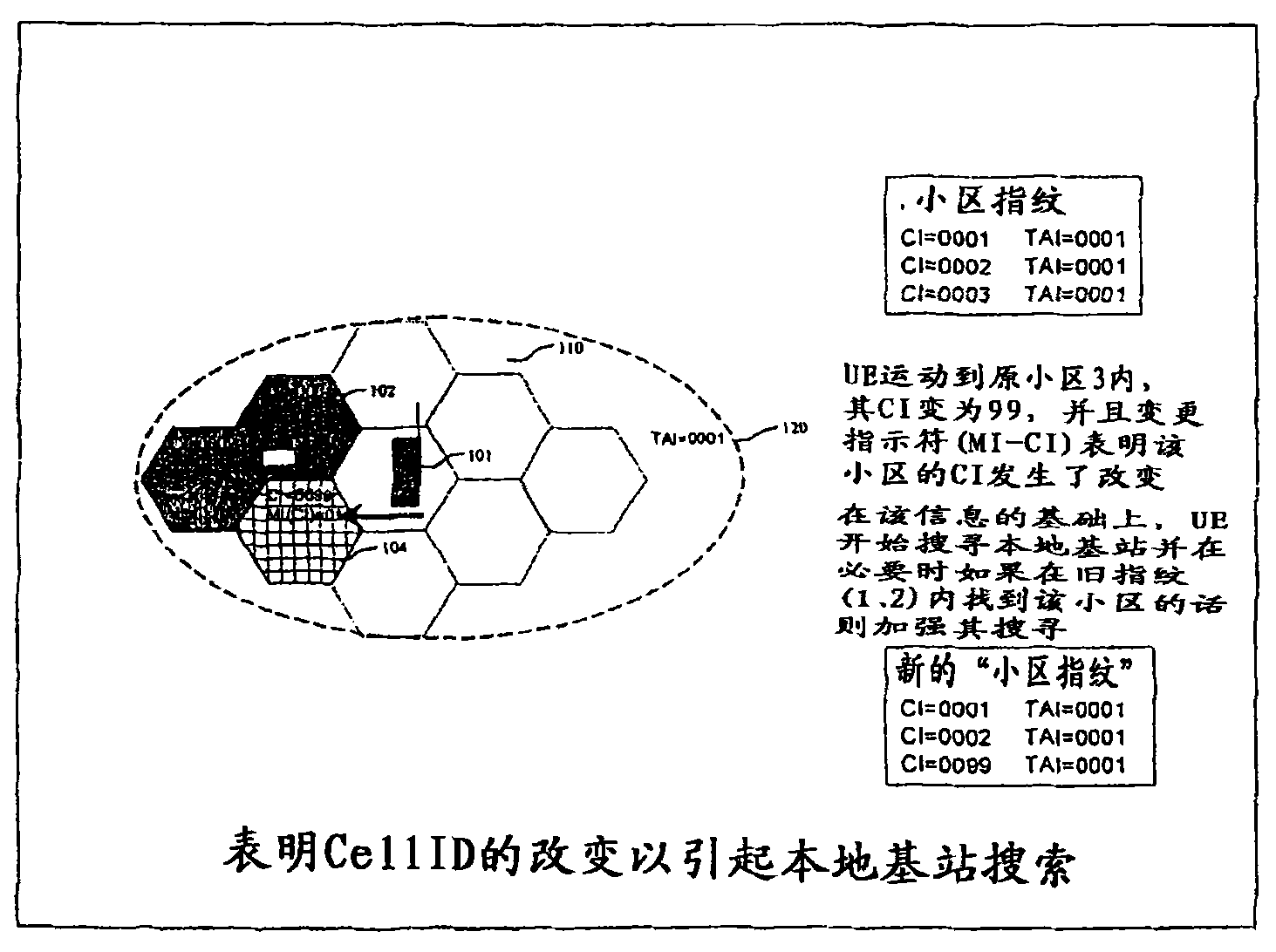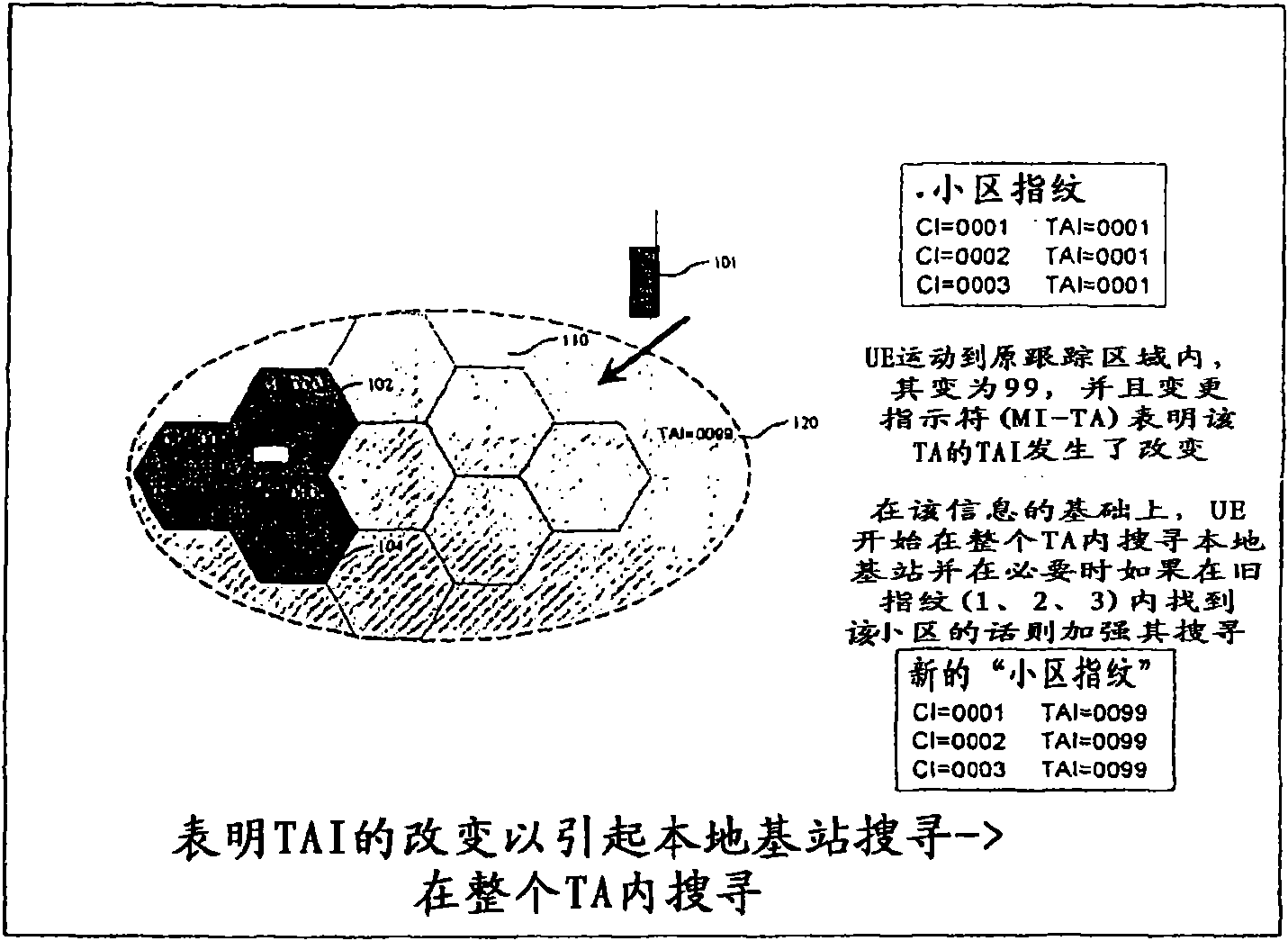Method for the terminal-based recognition of home base stations in a cellular mobile radio system by means of support by the mobile radio network
A mobile wireless and terminal device technology, applied in the directions of location-based services, wireless communication, electrical components, etc., can solve the problems of "the cell fingerprint is not found, and the user cannot get the notification of the mobile wireless operator to change the network configuration, etc., Achieving the effect of reliable rediscovery
- Summary
- Abstract
- Description
- Claims
- Application Information
AI Technical Summary
Problems solved by technology
Method used
Image
Examples
Embodiment Construction
[0036] If the mobile wireless terminal device 101, for example, stores the information of the six cells of the macro cell network 110 geographically near its own local base station 100 as a "cell fingerprint" with a cell identifier (CI) and a tracking area identifier (TAI) (in In the case of E-UTRAN, otherwise in the case of UMTS or GSM corresponding area information such as location area (LA)), the cell layout triggers the mobile radio terminal to search for its own local base station 100 as follows:
[0037] A typical "cell fingerprint" in the surrounding environment of the local base station itself:
[0038] CI=00001TAI=00001
[0039] CI=00002TAI=00001
[0040] CI=00003TAI=00001
[0041] CI=00004TAI=00001
[0042] CI=00005 TAI=00002
[0043] CI=00006 TAI=00002
[0044] The method used according to the current state of the art is based on statistical probabilities, within a cellular mobile radio system (PLMN) this cell layout is one-time (or at least again precisely at ...
PUM
 Login to View More
Login to View More Abstract
Description
Claims
Application Information
 Login to View More
Login to View More - R&D
- Intellectual Property
- Life Sciences
- Materials
- Tech Scout
- Unparalleled Data Quality
- Higher Quality Content
- 60% Fewer Hallucinations
Browse by: Latest US Patents, China's latest patents, Technical Efficacy Thesaurus, Application Domain, Technology Topic, Popular Technical Reports.
© 2025 PatSnap. All rights reserved.Legal|Privacy policy|Modern Slavery Act Transparency Statement|Sitemap|About US| Contact US: help@patsnap.com



